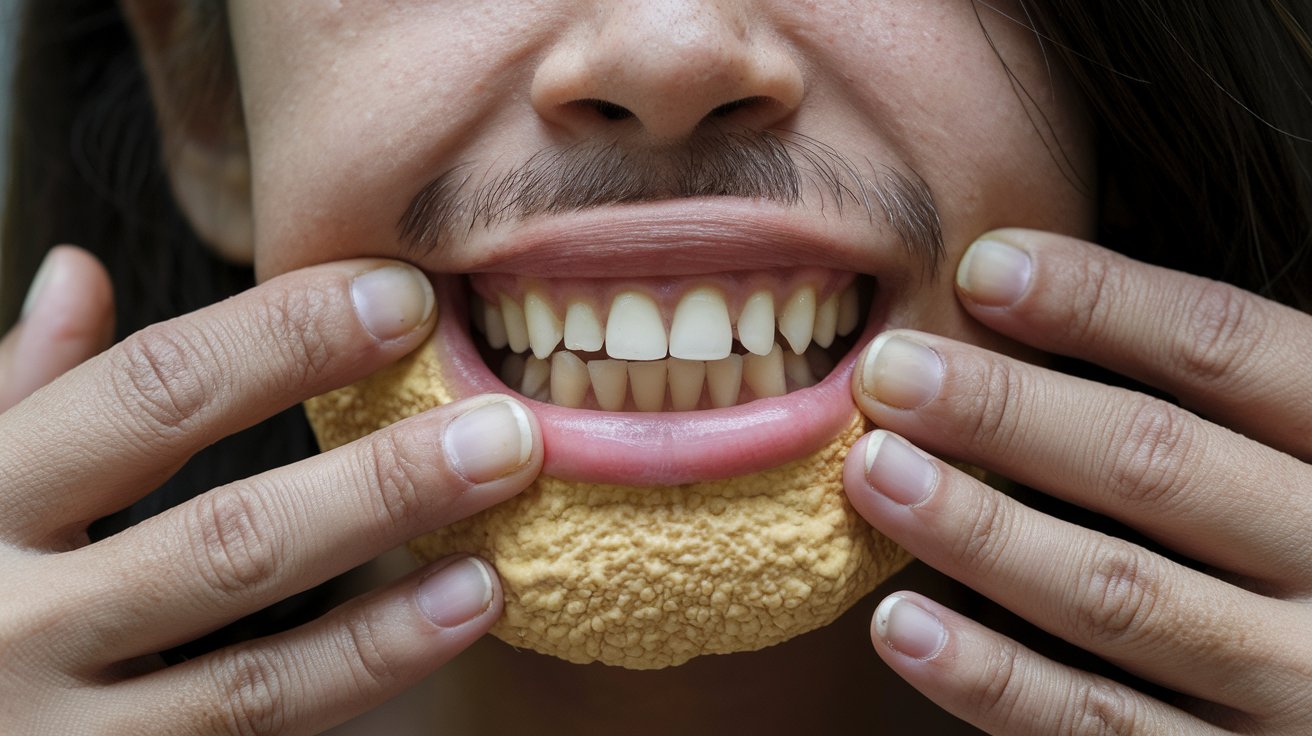
What is Odonto-Tricho-Ungual-Digital-Palmar Syndrome? This rare genetic disorder affects hair, teeth, nails, and limbs. Imagine being born with teeth already in place, having fragile, straw-like hair, and experiencing unusual hand and foot shapes. This condition, inherited in an autosomal dominant pattern, means a single copy of the mutated gene can cause the syndrome. Only a few cases have been reported, making it a challenge for doctors to diagnose. Early detection through clinical evaluation and genetic testing is crucial. Understanding its features and management strategies can help those affected lead better lives. Let's dive into the key facts about this unique syndrome.
Key Takeaways:
- Odonto-Tricho-Ungual-Digital-Palmar Syndrome is a rare genetic disorder affecting teeth, hair, nails, and hands. Early diagnosis and specialized care are crucial for managing its diverse symptoms.
- Global awareness and ongoing research are essential for understanding and managing Odonto-Tricho-Ungual-Digital-Palmar Syndrome. Collaboration and support can improve diagnosis rates and access to care.
What is Odonto-Tricho-Ungual-Digital-Palmar Syndrome?
Odonto-Tricho-Ungual-Digital-Palmar Syndrome is a rare genetic disorder that affects multiple parts of the body. It falls under the category of ectodermal dysplasias, which impact structures like hair, teeth, nails, and sweat glands. Let's dive into some key facts about this condition.
-
Definition and Classification: This syndrome is a rare ectodermal dysplasia characterized by neonatal teeth, trichodystrophy, onychodystrophy, and malformations of the hands and feet.
-
Genetic Basis: Inherited in an autosomal dominant pattern, a single copy of the mutated gene causes the condition. Each child of an affected parent has a 50% chance of inheriting it.
-
Clinical Features: Key features include natal teeth, trichodystrophy, prominent interdigital folds, simian-like hands with transverse palmar creases, and ungual digital dystrophy.
Dental Abnormalities
Dental issues are one of the hallmark features of this syndrome. These abnormalities can be present from birth and require special attention.
-
Dental Abnormalities: Natal teeth, which are teeth present at birth, are a hallmark. These teeth are often small and may be loose.
-
Symptoms at Birth: Many symptoms, including natal teeth, are present at birth or shortly after, making early diagnosis crucial.
-
Dental Care: Regular dental check-ups are essential to monitor and manage natal teeth. These teeth may need to be extracted to prevent dental problems.
Skin and Hair Abnormalities
The syndrome also affects the skin and hair, leading to unique challenges in managing these symptoms.
-
Skin Abnormalities: Trichodystrophy is characterized by straw-like, discolored, and fragile hair, affecting hair follicles and leading to abnormal growth.
-
Skin Care: Individuals with trichodystrophy require gentle skin care to prevent further damage. Using mild shampoos and avoiding harsh chemicals can help.
Nail and Digital Abnormalities
Nail and digital abnormalities are significant features of this syndrome, affecting the hands and feet in various ways.
-
Nail Abnormalities: Onychodystrophy refers to the malformation of nails. Affected individuals may have brittle, fragile, or deformed nails.
-
Hand and Foot Malformations: Features include simian-like hands, transverse palmar creases, interdigital folds, brachydactyly, and shortness of the first metacarpal and metatarsal bones with hypoplasia of the distal phalanges.
-
Orthopedic Interventions: For hand and foot malformations, orthopedic interventions like bracing or surgery may be necessary to correct deformities and improve function.
Prevalence and Diagnosis
Given its rarity, diagnosing this syndrome can be challenging. Understanding its prevalence and diagnostic methods is essential.
-
Prevalence: Extremely rare, with only a few reported cases. As of 1997, there were 21 documented patients.
-
Diagnostic Challenges: The syndrome can be challenging to diagnose due to its rarity and overlapping symptoms with other ectodermal dysplasias. Comprehensive clinical evaluation and genetic testing are often required.
-
Genetic Testing: Genetic testing can confirm the diagnosis by identifying mutations in the responsible genes. However, the exact genetic basis is not fully understood.
Management and Treatment
Managing this syndrome involves addressing various symptoms and preventing complications. There is no specific cure, so treatment focuses on symptom management.
-
Management and Treatment: No specific treatment exists. Management focuses on addressing symptoms and preventing complications, including dental care, skin care, and orthopedic interventions.
-
Psychological Support: Living with a rare genetic disorder can have significant psychological implications. Providing emotional support and counseling to affected individuals and their families is crucial.
Research and Future Directions
Research into this rare syndrome is ongoing, aiming to understand its genetic basis and develop better management strategies.
-
Research Activities: Despite its rarity, research is ongoing. Studies aim to understand the genetic basis and develop more effective management strategies.
-
Future Directions: Future research includes identifying specific genes responsible, developing targeted therapies, and improving diagnostic accuracy. Advanced genetic techniques like whole-exome sequencing may help.
Resources and Support
Access to resources and support can make a significant difference for individuals and families affected by this syndrome.
-
Patient-Centered Resources: Support groups and educational materials can help individuals and families cope. These resources provide valuable information on managing symptoms and accessing medical care.
-
International Collaboration: Collaboration among international researchers and clinicians is essential for advancing our understanding of rare genetic disorders. This collaboration can lead to better diagnostic tools and treatment options.
-
Orphanet Classification: The syndrome is classified on Orphanet, a database of rare diseases and orphan drugs. This classification helps disseminate information to healthcare professionals and researchers.
Ethical Considerations
Ethical considerations play a crucial role in managing rare genetic disorders, ensuring patient autonomy and informed consent.
- Ethical Considerations: Ethical considerations are crucial when dealing with rare genetic disorders. Informed consent, genetic counseling, and respect for patient autonomy are essential components.
Global Awareness
Raising global awareness about this rare syndrome is vital for improving diagnosis rates and access to care.
-
Global Awareness: Raising global awareness about rare genetic disorders is vital for improving diagnosis rates and access to care. This awareness can facilitate collaboration among healthcare providers and researchers worldwide.
-
Newborn Screening: No specific newborn screening test exists for this syndrome. However, early detection through clinical evaluation and genetic testing is essential for timely interventions.
-
Literature Review: The last comprehensive review was published in 1997. Since then, no further descriptions in the literature highlight the need for continued research and documentation of cases.
Final Thoughts on Odonto-Tricho-Ungual-Digital-Palmar Syndrome
Odonto-Tricho-Ungual-Digital-Palmar Syndrome is a rare genetic disorder that affects teeth, hair, nails, and limbs. With its autosomal dominant inheritance, each child of an affected parent has a 50% chance of inheriting the condition. Key features include natal teeth, fragile hair, deformed nails, and hand and foot malformations. Diagnosis can be tricky due to its rarity and overlapping symptoms with other conditions. Genetic testing and comprehensive clinical evaluations are crucial for accurate identification. While there's no specific treatment, managing symptoms through dental care, skin care, and orthopedic interventions can improve quality of life. Psychological support is also vital for affected individuals and their families. Continued research and international collaboration are essential for better understanding and managing this condition. Raising global awareness will help improve diagnosis rates and access to care, ultimately benefiting those living with this syndrome.
Frequently Asked Questions
Was this page helpful?
Our commitment to delivering trustworthy and engaging content is at the heart of what we do. Each fact on our site is contributed by real users like you, bringing a wealth of diverse insights and information. To ensure the highest standards of accuracy and reliability, our dedicated editors meticulously review each submission. This process guarantees that the facts we share are not only fascinating but also credible. Trust in our commitment to quality and authenticity as you explore and learn with us.


